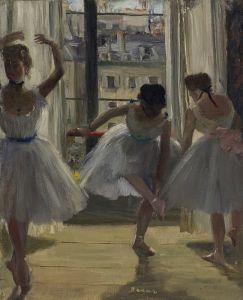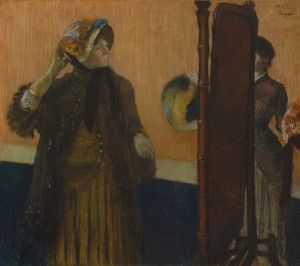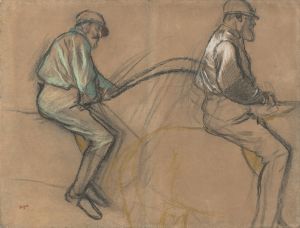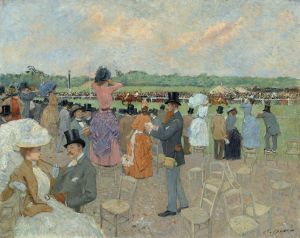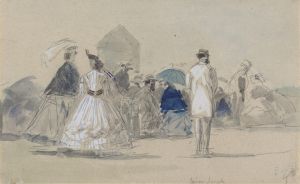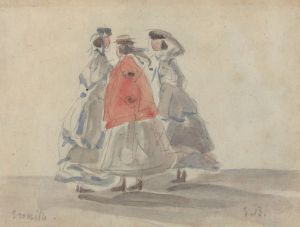
At the Milliner’s
A hand-painted replica of Edgar Degas’s masterpiece At the Milliner’s, meticulously crafted by professional artists to capture the true essence of the original. Each piece is created with museum-quality canvas and rare mineral pigments, carefully painted by experienced artists with delicate brushstrokes and rich, layered colors to perfectly recreate the texture of the original artwork. Unlike machine-printed reproductions, this hand-painted version brings the painting to life, infused with the artist’s emotions and skill in every stroke. Whether for personal collection or home decoration, it instantly elevates the artistic atmosphere of any space.
Edgar Degas, a prominent French artist associated with the Impressionist movement, is renowned for his innovative compositions and distinctive approach to capturing modern life. One of his notable works, "At the Milliner’s," exemplifies his fascination with contemporary Parisian society and the burgeoning fashion industry of the late 19th century. This painting, created around 1882, is part of a series of works by Degas that explore the theme of millinery, or hat-making, which was a significant aspect of women's fashion during this period.
"At the Milliner’s" depicts a scene inside a millinery shop, where women are engaged in the process of selecting and trying on hats. Degas's interest in this subject reflects his broader exploration of the roles and activities of women in modern urban settings. The painting captures the intimate and personal nature of shopping for hats, a luxury item that was both a fashion statement and a symbol of social status.
Degas's technique in "At the Milliner’s" is characterized by his use of pastels, a medium he favored for its ability to convey texture and color with immediacy and vibrancy. The composition is notable for its dynamic arrangement and the way it captures the interaction between the figures and their environment. Degas employs a high viewpoint and a cropped framing, techniques that were innovative at the time and contributed to the sense of immediacy and realism in his work.
The painting is also significant for its exploration of light and color. Degas uses a palette of soft, muted tones to create a harmonious and atmospheric effect. The interplay of light and shadow adds depth to the scene and highlights the delicate textures of the fabrics and materials in the shop. This attention to detail and the subtle rendering of surfaces are hallmarks of Degas's style.
"At the Milliner’s" is part of a broader series of works by Degas that focus on the theme of millinery. These works collectively offer insight into the social and economic changes taking place in Paris during the late 19th century, particularly the rise of consumer culture and the increasing visibility of women in public spaces. Degas's millinery scenes are not merely depictions of fashion but are also reflections on the nature of modernity and the changing roles of women in society.
The painting is housed in the Art Institute of Chicago, where it continues to be a subject of study and admiration. It exemplifies Degas's ability to capture the nuances of human behavior and the complexities of modern life through his innovative use of composition, color, and medium. "At the Milliner’s" remains a testament to Degas's skill as an observer of contemporary life and his contribution to the development of modern art.





